By IAN SOMOSA, GMA New Media
May 10, 2020
Of the 10,610 confirmed cases of COVID-19 in the Philippines as of May 9, some 65% or 6,916 were registered in Metro Manila alone.
Barely a week from the May 15 end of the enhanced community quarantine, can we say that cities in the National Capital Region are winning the battle against the spread of the virus?
Based on the latest DOH data, we used the moving 7-day average to get the trend of the daily cases to try to shed light on the question. The graphs below show the daily number of reported cases (in blue) and the seven-day moving average (in red).
The data shows that among the cities in NCR, Pasig and Mandaluyong have been consistently showing a downward trend in the number of confirmed cases.
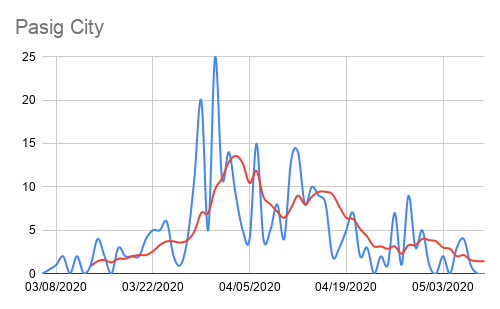
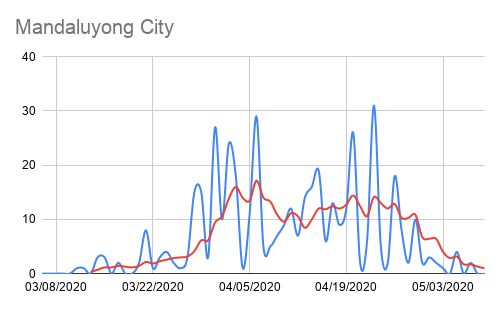
Source: DOH data compiled by Shai Lagarde and Ian Somosa
As of May 9, Pasig City has reported 311 cases, seventh-most in Metro Manila, while Mandaluyong has 445 confirmed cases, sixth-most in the capital region.
Marikina City and San Juan City, meanwhile, are slowly catching up to the trend. These two cities ranked first and second with the highest recovery rate of the disease. A third of the 138 confirmed cases from Marikina have already recovered, while 30% of the 243 confirmed cases from San Juan have recovered from the disease.
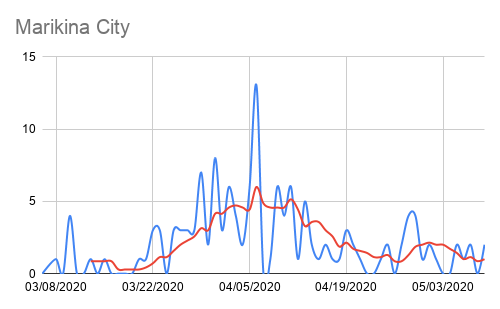
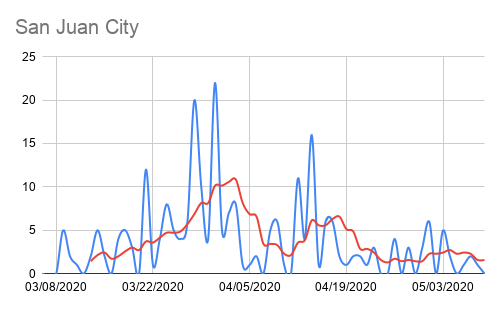
Source: DOH data compiled by Shai Lagarde and Ian Somosa
The two most populous cities in NCR are far from flattening the curve. Recent data indicates an uptick in the number of cases in Quezon City and Manila.
In part because of its large population, Quezon City currently has the most number of cases and deaths from the disease, with a total of 1,523 confirmed cases, of which 382 patients have recovered and 121 patients have died.
Manila, on the other hand has a total 833 confirmed cases, of which 69 have died and 179 patients have recovered.
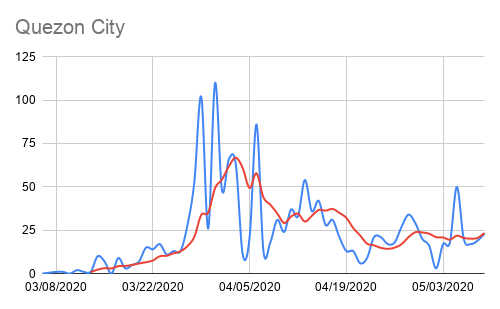
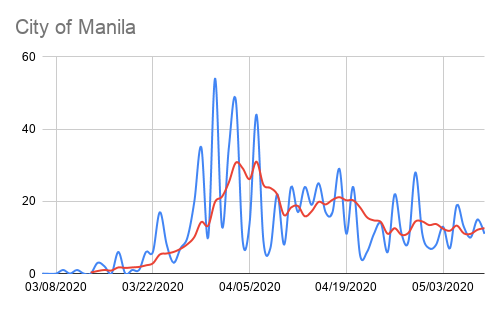
Source: DOH data compiled by Shai Lagarde and Ian Somosa
Cases in the CAMANAVA area meanwhile remain relatively low, although an uptick was observed over the last few days for Malabon and Navotas.
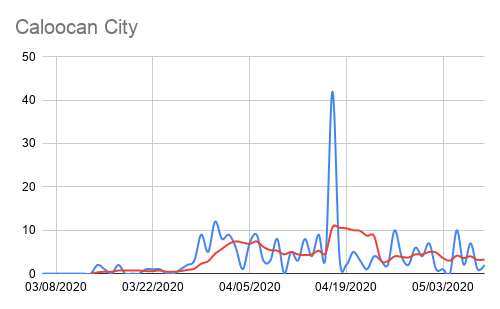
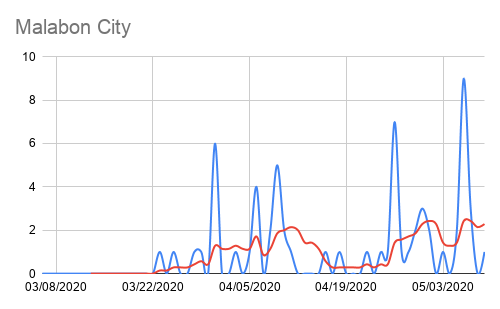
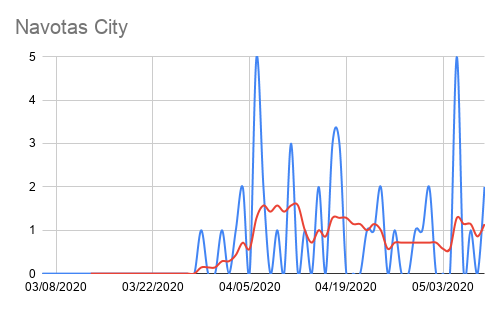
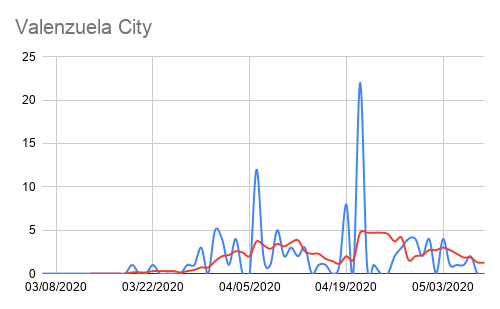
Source: DOH data compiled by Shai Lagarde and Ian Somosa
Cities in southern Metro Manila are likewise showing a downtrend over the past few days, even though there have been upticks that have followed previous downtrends.
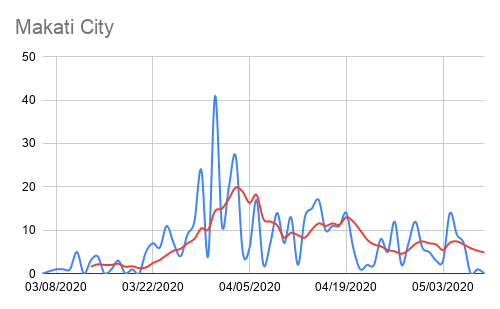
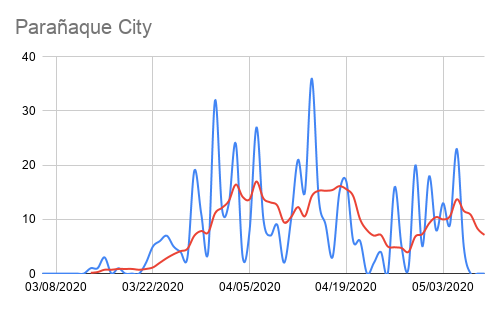
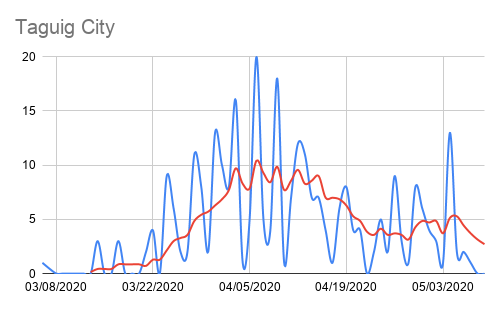
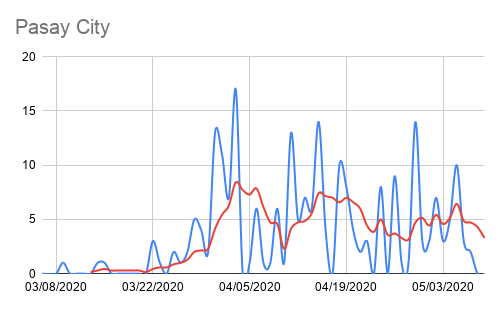
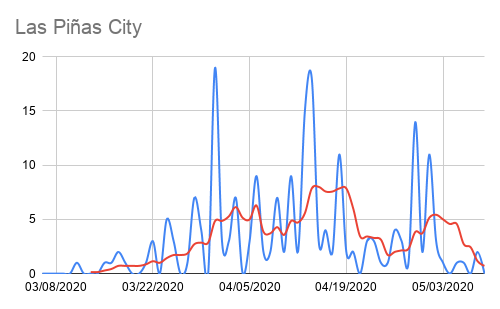

Source: DOH data compiled by Shai Lagarde and Ian Somosa
Mayors of Metro Manila have already put forward three recommended options to the Inter-Agency Task Force on Emerging Infectious Diseases after the second extension of the enhanced community quarantine (ECQ) ends on May 15.
Their first recommendation is the extension of the ECQ for up to two weeks, or until the end of May.
The second recommendation is for the government to move Metro Manila from ECQ to a general community quarantine (GCQ).
The third option is a modified combination of an ECQ and a GCQ.
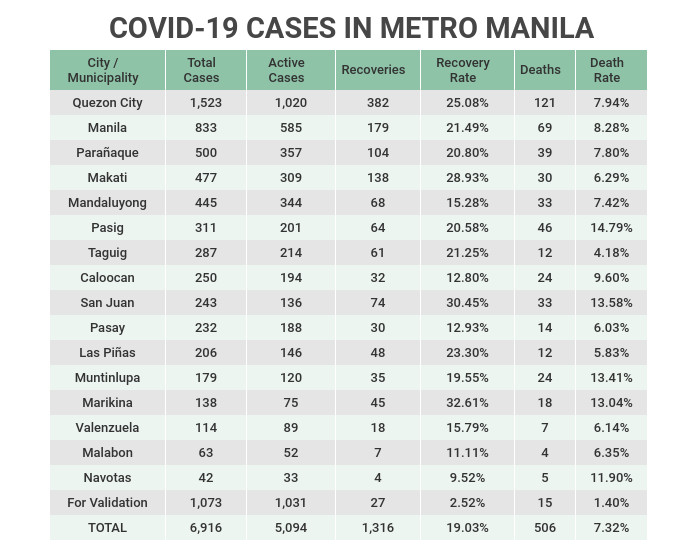
As of May 9, 2020. Source: DOH data compiled by Shai Lagarde and Ian Somosa
While these are simply recommendatory, Interior Undersecretary Jonathan Malaya said the IATF will carefully study the mayors’ recommendation. Depending on data as the expiration of ECQ draws near, Malaya said the IATF may have a final decision by May 13 or 14 on whether or not the stricter quarantine measure in Metro Manila will be extended.